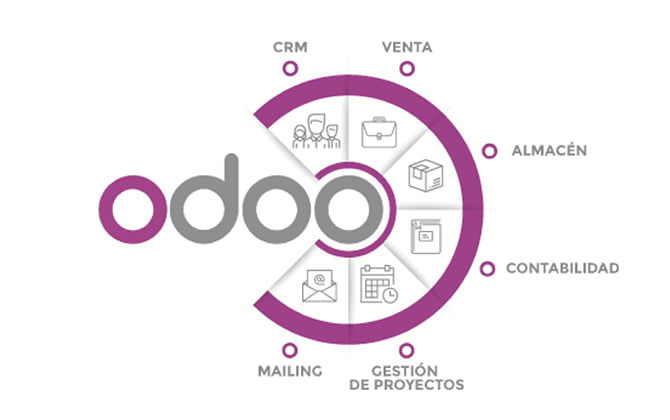Understanding Live Chat

Live chat has emerged as a powerful tool, revolutionizing how businesses interact with their customers in real-time. This essay delves into the evolution of customer support, the importance of live chat in modern customer service, and the key features and functionalities of live chat software.
Evolution of Customer Support: From Traditional Methods to Real-Time Communication
Traditionally, customer support relied heavily on phone calls and emails. While these methods were effective to some extent, they often lacked immediacy and personalization. Customers had to wait on hold for extended periods or endure delayed responses to their emails, leading to frustration and dissatisfaction. As technology advanced, businesses began exploring new avenues for customer communication.
The advent of live chat marked a significant shift in the customer support landscape. Live chat allows businesses to engage with customers in real-time, providing instant assistance and resolving issues promptly. Unlike phone calls, which require customers to stay tethered to their phones, or emails, which may take hours or even days to receive a response, live chat offers immediate gratification. Customers can initiate a chat session with a support agent with just a few clicks, making it a convenient and efficient means of communication.
Importance of Live Chat in Modern Customer Service

In today’s hyper-connected world, where consumers expect instant gratification and personalized experiences, live chat has become indispensable for businesses across industries. Several factors contribute to the growing importance of live chat in modern customer service:
- Instant Support: Live chat enables businesses to provide instant support to their customers. Whether it’s answering product inquiries, troubleshooting technical issues, or assisting with purchases, live chat allows businesses to address customer concerns in real-time, fostering a positive customer experience.
- Convenience: Live chat offers unparalleled convenience for both customers and support agents. Customers can initiate a chat session from any device, at any time, without having to navigate complex phone menus or wait in long queues. Similarly, support agents can handle multiple chat sessions simultaneously, increasing efficiency and productivity.
- Personalization: Live chat allows businesses to deliver personalized support tailored to each customer’s needs. By analyzing chat transcripts and customer data, businesses can gain valuable insights into customer preferences, purchase history, and pain points, enabling them to offer targeted recommendations and solutions.
- Cost-Effectiveness: Compared to traditional support channels such as phone support, live chat is a cost-effective solution for businesses. It requires minimal infrastructure investment and allows support agents to handle multiple chats simultaneously, reducing the need for additional staffing.
- Competitive Advantage: In a crowded marketplace, providing exceptional customer service sets businesses apart from their competitors. Live chat not only meets but exceeds customer expectations, helping businesses build brand loyalty and gain a competitive edge.
Key Features and Functionalities of Live Chat Software
Live chat software comes with a plethora of features and functionalities designed to streamline the customer support process and enhance the overall user experience. Some key features include:
- Real-Time Messaging: Live chat software enables instant messaging between customers and support agents in real-time, facilitating seamless communication and quick issue resolution.
- Customizable Chat Widgets: Businesses can customize the appearance and behavior of chat widgets to align with their brand identity and website design. This includes options to personalize greetings, colors, and placement on the website.
- Proactive Chat Invitations: Live chat software allows businesses to proactively engage website visitors by sending automated chat invitations based on predefined triggers such as time spent on a page, exit intent, or specific actions taken on the website.
- Chat Transcripts and History: Live chat software automatically logs and archives chat transcripts, allowing both customers and support agents to refer back to previous conversations for continuity and context.
- Integration with CRM Systems: Many live chat platforms offer seamless integration with Customer Relationship Management (CRM) systems, allowing businesses to access customer data, track interactions, and manage leads more effectively.
- Chatbot Integration: Some live chat software includes chatbot functionality, enabling businesses to automate routine tasks, answer frequently asked questions, and provide 24/7 support without human intervention.
- Multichannel Support: In addition to website chat, many live chat platforms offer support for other communication channels such as social media messaging, SMS, and email, providing a unified customer support experience across channels.
- Analytics and Reporting: Live chat software provides valuable analytics and reporting tools that allow businesses to track key metrics such as chat volume, response times, customer satisfaction ratings, and conversion rates, enabling continuous improvement and optimization of the support process.
Introduction to Odoo

Odoo stands out as a comprehensive suite of business management applications designed to streamline operations, enhance productivity, and foster growth for businesses of all sizes across various industries. With its modular architecture and user-friendly interface, Odoo offers a versatile solution that can be tailored to meet the specific needs of each organization.
Overview of Odoo:
At its core, Odoo provides a wide array of modules covering essential business functions such as CRM (Customer Relationship Management), sales, inventory management, accounting, human resources, manufacturing, e-commerce, and more. These modules seamlessly integrate with each other, allowing for smooth data flow and real-time insights across departments. Additionally, Odoo is highly customizable, enabling businesses to adapt the system to their unique workflows and requirements without the need for extensive coding knowledge.
Core Modules and Functionalities of Odoo:
- CRM (Customer Relationship Management): Manage leads, opportunities, customer interactions, and sales pipelines effectively.
- Sales: Create quotes, manage orders, track sales performance, and automate follow-up processes.
- Inventory Management: Optimize inventory levels, track stock movements, and streamline warehouse operations.
- Accounting: Handle invoicing, payments, expense tracking, and financial reporting with ease.
- Human Resources: Manage employee information, attendance, leave, payroll, and recruitment processes.
- Manufacturing: Plan production, track work orders, manage bills of materials, and monitor manufacturing processes.
- E-commerce: Build and manage online stores, synchronize inventory, and provide seamless shopping experiences to customers.
- Website Builder: Design and customize websites with drag-and-drop functionality, integrated with e-commerce capabilities.
- Project Management: Collaborate on projects, allocate resources, track progress, and manage tasks efficiently.
- Marketing Automation: Run targeted campaigns, track leads, and analyze marketing performance.
These are just a few examples of the extensive functionalities offered by Odoo. Each module can be implemented individually or in combination with others, providing businesses with the flexibility to scale and adapt as needed.
Advantages of Integrating Live Chat with Odoo:
Integrating live chat with Odoo brings several benefits to businesses, enhancing customer engagement, satisfaction, and overall efficiency.
- Real-Time Customer Support: Live chat enables businesses to provide instant assistance to website visitors and customers, addressing queries, resolving issues, and offering personalized guidance in real-time.
- Improved Sales Conversion: By engaging with prospects promptly through live chat, businesses can nurture leads, provide product information, and guide them through the purchasing process, leading to higher conversion rates.
- Enhanced Customer Experience: Offering live chat support demonstrates a commitment to customer service excellence, fostering positive experiences and building trust and loyalty among customers.
- Efficient Communication: Live chat integrated with Odoo centralizes communication channels, allowing agents to manage inquiries and conversations within the same platform used for other business operations, leading to better coordination and streamlined workflows.
- Data-driven Insights: Live chat interactions are logged within Odoo, providing valuable data and insights into customer preferences, pain points, and frequently asked questions, which can inform marketing strategies, product development, and customer service improvements.
Benefits of Live Chat on Odoo
Enhanced Customer Engagement and Satisfaction:
Live chat on Odoo offers a direct and convenient channel for customers to engage with businesses in real-time. Unlike traditional communication methods such as emails or phone calls, live chat provides instantaneous responses, allowing businesses to address customer queries promptly. This immediate interaction not only increases customer satisfaction by delivering timely assistance but also fosters a sense of trust and reliability.
Moreover, live chat enables personalized interactions tailored to each customer’s needs and preferences. With access to customer data and history within the Odoo platform, agents can provide personalized recommendations, offer targeted solutions, and anticipate customer needs effectively. By delivering a tailored experience, businesses can create lasting impressions and forge stronger relationships with their customers, ultimately driving loyalty and retention.
Streamlined Communication and Faster Issue Resolution:
The integration of live chat with Odoo streamlines communication channels within the organization, enabling seamless collaboration among teams. Agents can quickly escalate issues to relevant departments or individuals, facilitating faster resolution of customer inquiries or concerns. Additionally, the centralized nature of Odoo ensures that all communication logs and interactions are stored in one platform, eliminating the need for switching between multiple tools or systems.
Furthermore, live chat on Odoo supports the integration of chatbots powered by artificial intelligence (AI). These intelligent bots can handle routine inquiries, provide basic support, and even initiate workflows based on predefined triggers. By automating repetitive tasks, chatbots free up human agents to focus on more complex issues, thereby improving efficiency and reducing response times.
Increased Sales and Conversion Rates:
Live chat serves as a powerful tool for driving sales and boosting conversion rates. By engaging visitors in real-time conversations, businesses can proactively address any concerns or objections potential customers may have during their purchasing journey. Whether it’s providing product recommendations, assisting with the checkout process, or offering promotional incentives, live chat empowers businesses to guide prospects towards making informed purchasing decisions.
Moreover, live chat facilitates proactive outreach through targeted messaging and personalized offers. By analyzing customer behavior and browsing patterns within Odoo, businesses can identify opportunities to initiate conversations and nurture leads effectively. Whether it’s reaching out to abandoned cart visitors or upselling complementary products, live chat enables businesses to capitalize on sales opportunities and maximize revenue generation.
Data-Driven Insights and Analytics for Informed Decision-Making:
One of the most significant advantages of live chat on Odoo is the wealth of data and insights it provides for informed decision-making. Through robust analytics tools integrated into the platform, businesses can track key metrics such as chat volume, response times, customer satisfaction scores, and conversion rates. By analyzing this data, businesses can gain valuable insights into customer preferences, pain points, and trends, enabling them to optimize their strategies and operations accordingly.
Furthermore, live chat data can be leveraged to enhance customer segmentation and targeting. By segmenting customers based on their interactions, preferences, and purchase history, businesses can deliver more relevant and personalized marketing campaigns. Whether it’s tailoring promotional offers, refining product recommendations, or optimizing website content, live chat data empowers businesses to optimize their marketing efforts and drive better results.
Live chat on Odoo offers a plethora of benefits for businesses looking to elevate their customer service, communication, and sales efforts. From enhancing customer engagement and satisfaction to streamlining communication and gaining valuable insights, live chat serves as a valuable asset in today’s competitive landscape.
Implementing Live Chat on Odoo
Setting Up Live Chat on Odoo
- Accessing the Live Chat Module: Start by logging into your Odoo dashboard and navigate to the Apps menu. Search for the Live Chat module and install it. Once installed, you can access the Live Chat application from the main dashboard.
- Configuring Live Chat Settings: In the Live Chat application, go to the configuration settings. Here, you can set your preferences regarding chat availability, offline messages, chat routing, and more. Customize these settings according to your business hours and customer support policies.
- Creating Chat Channels: Determine the different chat channels you want to offer, such as sales inquiries, technical support, or general queries. Create separate chat channels within Odoo to organize incoming messages efficiently.
- Assigning Agents: Assign agents or team members to specific chat channels based on their expertise or department. This ensures that customers are connected with the right person to address their concerns promptly.
- Testing the Live Chat: Before making live chat available to customers, conduct internal testing to ensure that everything is functioning smoothly. Test different scenarios to anticipate common issues and train agents on how to handle them effectively.
Customization Options for Live Chat
- Branding and Design: Customize the appearance of the live chat widget to align with your brand identity. Modify colors, fonts, and logos to create a seamless integration with your website or app.
- Predefined Responses: Create predefined responses or canned messages to streamline communication and provide quick answers to frequently asked questions. This saves time for both agents and customers while maintaining consistency in responses.
- Chat Routing Rules: Set up rules to automatically route incoming chats to the most appropriate agent or department based on predefined criteria such as language preference, customer location, or type of inquiry.
- Integration with Knowledge Base: Integrate the live chat with Odoo’s Knowledge Base module to empower agents with instant access to relevant articles, FAQs, and troubleshooting guides. This enables them to provide accurate information and solutions to customers in real-time.
Integration with Other Odoo Modules
- Customer Relationship Management (CRM): Seamlessly sync live chat conversations with the CRM module to maintain a comprehensive record of customer interactions. This enables sales and support teams to access chat history, track customer inquiries, and nurture leads more effectively.
- Helpdesk Ticketing: Integrate live chat with the Helpdesk module to automatically convert chat conversations into support tickets for further follow-up and resolution. This ensures that no customer query falls through the cracks and helps maintain accountability within the support team.
- E-commerce Integration: For businesses with an e-commerce presence, integrate live chat with the E-commerce module to offer real-time assistance to online shoppers. Assist customers with product inquiries, order tracking, and checkout assistance to enhance their shopping experience and increase conversion rates.
Best Practices for Live Chat Success
Training Your Support Team for Effective Live Chat Interactions
The foundation of successful live chat support lies in having a well-trained support team. Unlike other forms of communication, live chat requires agents to think on their feet and respond swiftly while maintaining professionalism and accuracy. To ensure your support team is equipped with the necessary skills, consider implementing the following training practices:
- Comprehensive Product Knowledge: Agents should have in-depth knowledge about your products or services to address customer queries effectively. Provide thorough training sessions covering product features, troubleshooting techniques, and commonly encountered issues.
- Communication Skills: Effective communication is key to delivering exceptional live chat support. Train your agents on active listening, clear and concise writing, empathy, and conflict resolution techniques to build rapport with customers and diffuse tense situations.
- Technical Proficiency: Familiarize your team with the live chat software’s functionalities and features to leverage its full potential. Conduct regular training sessions to keep them updated on any new tools or updates.
- Role-Playing Exercises: Encourage role-playing exercises where agents simulate real-life chat scenarios to practice their skills and receive constructive feedback. This hands-on approach can help them refine their communication and problem-solving abilities.
- Continuous Learning: Live chat support is dynamic, with new challenges and trends emerging regularly. Encourage continuous learning through workshops, webinars, and online resources to keep your team abreast of industry best practices and innovations.
Personalization and Proactive Engagement Strategies
In a sea of digital interactions, personalization can set your live chat support apart and make customers feel valued. By leveraging customer data and employing proactive engagement strategies, you can create tailored experiences that resonate with your audience:
- Data-driven Personalization: Utilize customer data such as purchase history, browsing behavior, and demographics to personalize chat interactions. Address customers by their names, reference previous interactions, and recommend relevant products or solutions based on their preferences.
- Proactive Chat Invitations: Anticipate customer needs and proactively initiate chat conversations based on predefined triggers such as prolonged website visits, cart abandonment, or specific page interactions. This proactive approach demonstrates attentiveness and can help prevent potential issues before they escalate.
- Contextual Messaging: Tailor your responses to align with the context of the conversation. Avoid generic replies and instead provide targeted solutions that address the customer’s specific concerns or inquiries. This demonstrates attentiveness and reinforces the perception of personalized assistance.
- Human Touch: While automation plays a significant role in streamlining processes, it’s essential to maintain a human touch in live chat interactions. Balance automated responses with genuine human interaction, especially in complex or emotionally charged situations where empathy and understanding are paramount.
Managing Multiple Chats Efficiently Without Compromising Quality
- Efficiently managing multiple chat conversations is a balancing act that requires careful prioritization, multitasking skills, and the right tools. Implement the following strategies to optimize chat queue management and ensure consistent quality across interactions:
- Prioritize Urgent Queries: Identify and prioritize high-priority chats that require immediate attention, such as technical issues, billing inquiries, or complaints. Implement a triage system to route urgent chats to specialized agents or escalate them to higher tiers of support.
- Set Realistic Chat Limits: Avoid overburdening agents by setting realistic chat limits based on factors such as complexity, average handling time, and agent workload. Monitor chat volume and adjust staffing levels accordingly to maintain optimal efficiency.
- Utilize Chat Routing and Queuing: Implement intelligent chat routing algorithms to match incoming chats with the most qualified available agents based on skillset, language proficiency, or specialization. Leverage queuing mechanisms to manage chat overflow during peak hours and ensure fair distribution among agents.
- Streamline Workflows with Automation: Automate routine tasks such as greeting messages, data collection, and basic inquiries using chatbots or predefined canned responses. By offloading repetitive tasks, agents can focus on more complex issues that require human intervention, improving overall productivity and response times.
Utilizing Canned Responses and Chatbots for Automation
- Canned responses and chatbots are invaluable tools for streamlining live chat interactions, reducing response times, and enhancing efficiency. However, it’s essential to deploy them thoughtfully to augment rather than replace human support. Here’s how you can leverage canned responses and chatbots effectively:
- Create a Knowledge Base of Canned Responses: Develop a comprehensive library of canned responses for common queries, FAQs, and standard procedures. Organize them based on categories or topics for easy retrieval and customization. Regularly review and update canned responses to ensure accuracy and relevance.
- Implement Chatbots for Tier-1 Support: Deploy chatbots to handle routine inquiries and provide instant responses round-the-clock. Train chatbots to recognize user intent, ask clarifying questions, and deliver relevant information or assistance. Integrate chatbots seamlessly with live chat software to offer a cohesive support experience.
- Escalate Complex Issues to Human Agents: Design chatbot workflows to seamlessly escalate complex or escalated issues to human agents when necessary. Implement triggers to detect instances where human intervention is required, ensuring a smooth transition and uninterrupted support experience for the customer.
- Monitor Performance and Fine-tune Strategies: Regularly monitor chatbot performance metrics such as response accuracy, resolution rate, and customer satisfaction scores. Analyze user feedback and interactions to identify areas for improvement and refine chatbot scripts or workflows accordingly.
Conclusion
In conclusion, live chat on Odoo offers businesses a powerful tool to elevate their customer support game, drive engagement, and boost overall satisfaction. By understanding its benefits, implementing best practices, and staying attuned to emerging trends, businesses can unlock the full potential of live chat to deliver exceptional experiences and foster long-term customer relationships.






